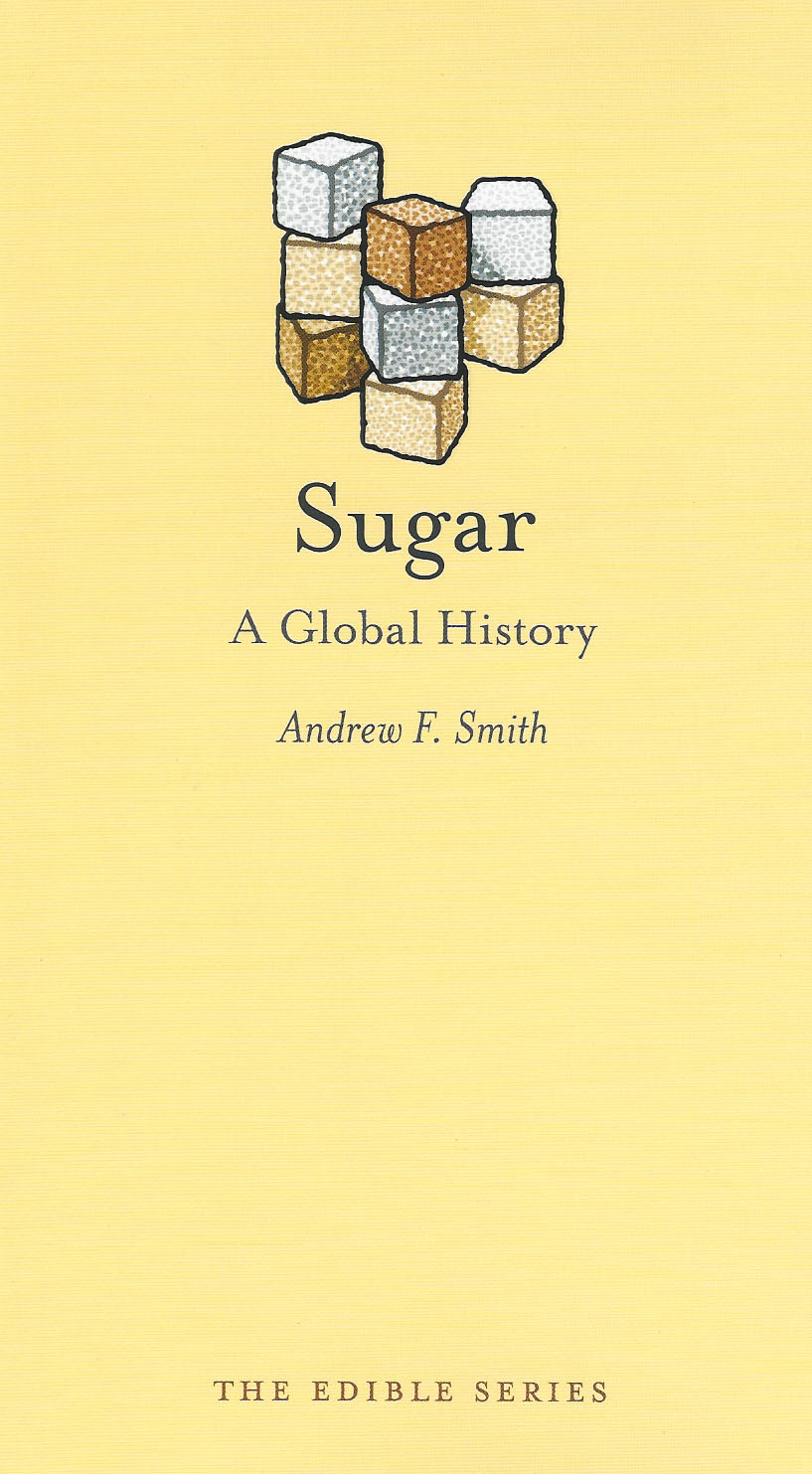
| What is Flavor and Fortune? |
| How do I subscribe? |
| How do I get past issues? |
| How do I advertise? |
| How do I contact the editor? |
Read 13145837 times
Connect me to:
| Home |
| Articles |
| Book reviews |
| Letters to the Editor |
| Newmans News and Notes |
| Recipes |
| Restaurant reviews |
| Article Index (all years, slow) |
| List of Article Years |
| Article Index (2026) |
| Article Index (last 2 years) |
| Things others say |
| Related Links |
| Log In... |
| Authors |
| Categories & Topics |
Sugar: A Global History by Andrew Smith
by: Andrew F. Smith
London UK:
Reaktion Books 2015, $18.95, Hardbound
ISBN: 978-1-78023-434-2
Reviewed by: Jacqueline M. Newman
Winter Volume: 2015 Issue: 22(4) page(s): 22
 This book has sixteen recipes that use use sugar, but not one is in a Chinese dish. The text does explain Saccharum officinarum hybridized with >i>Saccharum spontaneum in South Asia and that it is hybridized again to Saccharum sinense. That happened some eight thousand years ago and still is made this way. Now it is grown in the Philippines, Indonesia, India, Southeast Asia, and southern China.
This book has sixteen recipes that use use sugar, but not one is in a Chinese dish. The text does explain Saccharum officinarum hybridized with >i>Saccharum spontaneum in South Asia and that it is hybridized again to Saccharum sinense. That happened some eight thousand years ago and still is made this way. Now it is grown in the Philippines, Indonesia, India, Southeast Asia, and southern China.
The text also advises that Sucheta Mazumdar, author of Sugar and Society in China (1998), wrote about sugar cane in Buddhist rituals. He tells about many sugar cane sayings attributed to Buddha (563 - 483 BCE). Onr learns that sugary juices were not forbidden to monks observing a fast, and that many Buddhist festival foods are made with sugar, also that sugar in the form of sculptures was exported to China in 221 BCE. However, neither sucrose nor cane sugar were among China’s first sweeteners.
In northern China, grains were the dominant crops and a sweet syrup was made from one of them, sorghum. For sometime, maltose was used as a sweetener; it is composed of two glucose molecules, is less sweet than sucrose, and was the most important sweetener in Chinese cookery.
In the 1200's, sugar was commonplace in southern and eastern China. A Chinese writer in Mng Liang Lu tell us that Wu Zimu describes seven confectionery shops in Hangzhou that sell colored flower-shaped candies, sweet rice porridge, spun sugar, flavored pastes, and fruits preserved in sugar syrup.
By the mid-13th century, two Chinese cookbooks include recipes for cakes, candies, and syrups made with sugar-cane products. Almost seventeen percent is in one of them and a quarter in the other calling for sugar. Therefore, sugar is used a lot; sugared fruits and sugared vegetables are sold by street vendors and in tea houses and taverns since that time.
The next Chinese sugar connection is to Marco Polo when he visited China at the end of the 13th century. He reported that Kublai Khan imported Egyptian sugar artisans to teach the Chinese how to process the sugar cane they were then growing. Demand led the sugar industry to hire contract laborers from India to work their sugar plantations.
Tea without sugar was consumed in China for thousands of years, but not until the Dutch began importing tea from China, circa 1610, did sugar become known in Western Europe as something to add to tea, coffee, or chocolate. In England, sugar was sold in many forms for the tea consumed there and for their other beverages, the most common form was cone-shaped sugar loaves to scrape into tea.
Sugar use exploded. In 1882, Chinese laborers were 49% of the world-wide sugar industry workforce. In Hawaii, the following year they stop accepting immigrants from China. Then and soon thereafter, most Chinese workers go home back to China.
Sugar cane and sugar beets remain the world’s most important crops, but in spite of their Chinese connection, the Chinese consume the least sugar among the world’s largest countries. Their intake is only seven teaspoons each day which is four pounds per person per year. Americans, in contrast, consume the most. The global average is seventeen teaspoons per day which is one hundred thirty-two pounds each and every year.
Beet sugar grows best in the temperate areas of the world. Hawaii did import a large Chinese labor force, most men, to work their twenty-nine sugar plantations. In 1882, they were forty-nine percent of Hawaii's labor force, however, most of them left by 1887. Today, China produces one-third of the world's sugar.
This book does show a great picture of sugar being made before that; it is from the Ming Dynasty (1368 - 1644) and shows sugar cane pressing out its juice. It had four columns of Chinese writing to the left, but does not advise what they say. It is a picture we have never before seen, and we would love to know more about it. If you can enlighten us, it would be appreciated as would anything else you know about sugar in China. appreciated.

Copyright © 1994-2026 by ISACC, all rights reserved
Address
3 Jefferson Ferry Drive
S. Setauket NY 11720